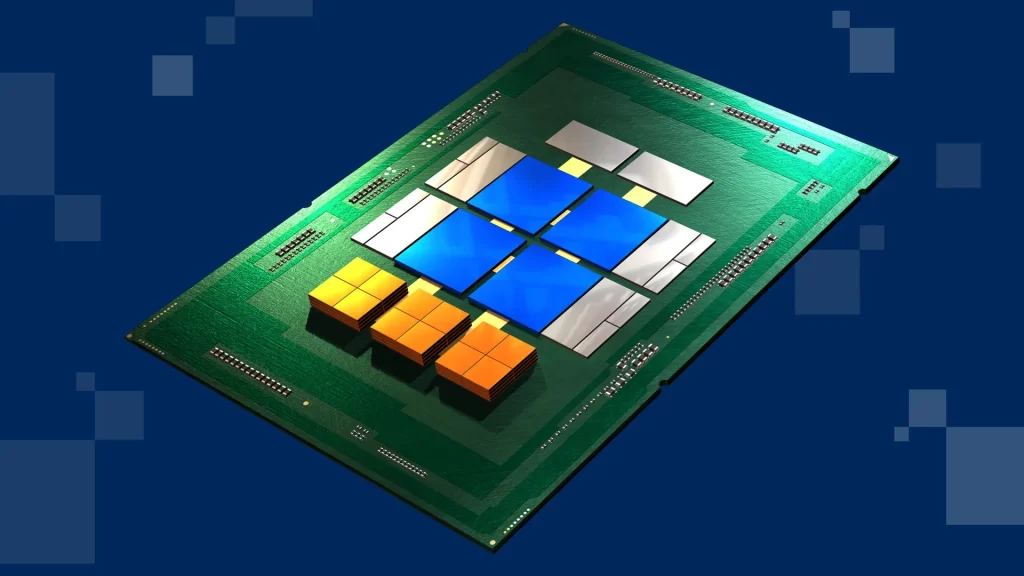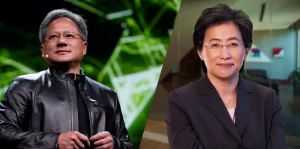Introduction:
The year 2023 stands as a pivotal moment in the breakthroughs of Very Large Scale Integration (VLSI) design, witnessing an amalgamation of groundbreaking technologies that have collectively redefined the landscape of chip design.
From the optimization of AI in VLSI to the seamless integration of quantum computing, 3D integrated circuits, and the adoption of novel memory technologies, the chip market has undergone a profound transformation.
In this detailed blog post, we will delve into the multifaceted advancements that have shaped the VLSI landscape in 2023, exploring each innovation with a keen eye for the intricate details.
Follow us on Linkedin for all major updates
1. AI-Optimized VLSI Design and GPU Integration:
The synergy between artificial intelligence (AI) and Graphics Processing Units (GPUs) reached new heights in 2023. The year witnessed the development of specialized architectures tailored for AI workloads, utilizing GPUs to enhance parallel processing capabilities.
These AI-optimized VLSI designs not only accelerated traditional computing tasks but also paved the way for the implementation of complex neural networks in various applications, from image recognition to natural language processing.
Read More: How Gen AI is ready to disrupt VLSI verification jobs
2. Neuromorphic Computing:
Neuromorphic computing emerged as a revolutionary approach, inspired by the intricate architecture of the human brain. In 2023, VLSI designers leveraged neuromorphic principles to create chips capable of mimicking synaptic connections and neural pathways.
This innovation facilitated the development of AI systems with enhanced learning capabilities, enabling machines to process information in a more contextually aware and human-like manner.
Read More: Explained: What the hell is Neuromorphic Computing
3. Quantum Computing Advancements:
Quantum computing, although still in its nascent stages, experienced significant breakthroughs in 2023. Researchers made strides in developing more stable and error-resistant quantum processors, bringing the promise of quantum supremacy closer to reality.
The potential applications of quantum computing in cryptography, optimization problems, and simulations became more tangible, sparking excitement about the transformative power of this technology.
Read More:Explained: What the hell is a Quantum Computer – techovedas
4. 3D Integrated Circuits Overcoming Moore’s Law Challenges:
Faced with the limitations of Moore’s Law, VLSI designers turned to 3D integrated circuits as a viable solution.
The approach involved stacking multiple layers of integrated circuits, thus overcoming the physical constraints of traditional two-dimensional designs.

This breakthrough not only increased computing power and speed but also addressed issues related to heat dissipation and interconnectivity, ushering in a new era of semiconductor technology.
5. In-Memory Computing for Efficient Data Processing:
In-memory computing emerged as a game-changer for data-intensive applications. VLSI designs in 2023 incorporated memory-centric architectures, allowing for faster data access and manipulation.
This innovation significantly improved the efficiency of AI algorithms and big data analytics by reducing the latency associated with traditional storage architectures.
6. Silicon Photonics Co-Packaged Optics in Data Centers:
The demand for faster and more efficient data center communication led to the widespread adoption of Silicon Photonics Co-Packaged Optics.
This technology integrated optical communication components directly onto the chip, enabling higher data transfer speeds and lower latency.
As data centers grappled with the increasing demands of modern applications, this development played a crucial role in enhancing overall performance and scalability.
Read More: Explained: What is Silicon Photonics that Transfers Data with Light
7. IoT and Edge Computing Fusion:
The convergence of IoT and Edge Computing in VLSI design reshaped the landscape for energy-efficient and application-specific designs. In 2023, semiconductor solutions tailored for the IoT ecosystem emerged, emphasizing low power consumption and real-time data processing at the edge.
This integration not only improved the responsiveness of IoT devices but also reduced the strain on centralized systems.
Read More: What are Top 10 Application of Internet of Things (IoT) in 2024
8. Advanced Memory Technologies: MRAM and ReRAM:
The year 2023 witnessed a revolution in data storage with the advent of advanced memory technologies such as Magnetoresistive Random Access Memory (MRAM) and Resistive Random Access Memory (ReRAM).
These technologies offered faster read and write speeds, increased durability, and lower power consumption compared to conventional memory solutions. As a result, VLSI designs benefited from improved overall system performance and reliability.
Read More: 5 Major Challenges Faced by Semiconductor Industry
9. Chiplets as Modular Solutions:
Chiplets emerged as a modular solution that streamlined semiconductor design processes. By breaking down complex systems into smaller, specialized components, chiplets allowed for greater flexibility and scalability in VLSI designs.

This approach facilitated the integration of diverse functionalities, reducing time-to-market and enhancing overall system performance.
Read more: How Chiplets Can Change the Future by extending Moore’s law
10. Biodegradable and Wearable Electronics:
Reflecting a growing awareness of environmental sustainability and user-centric technology, 2023 witnessed significant advancements in biodegradable and wearable electronics.
VLSI designs incorporated eco-friendly materials and flexible substrates, giving rise to electronic devices that not only minimized environmental impact but also seamlessly integrated into the daily lives of users.
Read More: 5 Takeaways from Synopsys’ Potential Ansys Acquisition
Conclusion:
In conclusion, the year 2023 has etched its place in history as a transformative period for VLSI innovation.
The intricate interplay of AI-optimized designs, neuromorphic computing, quantum breakthroughs, 3D integrated circuits, in-memory computing, Silicon Photonics Co-Packaged Optics, IoT and Edge Computing fusion, advanced memory technologies, chiplets, and sustainable electronics has reshaped the very foundations of chip design.
As we look ahead, the impact of these intricate advancements will continue to reverberate, guiding the future trajectory of VLSI and ushering in an era of unprecedented possibilities in computing and technology.




